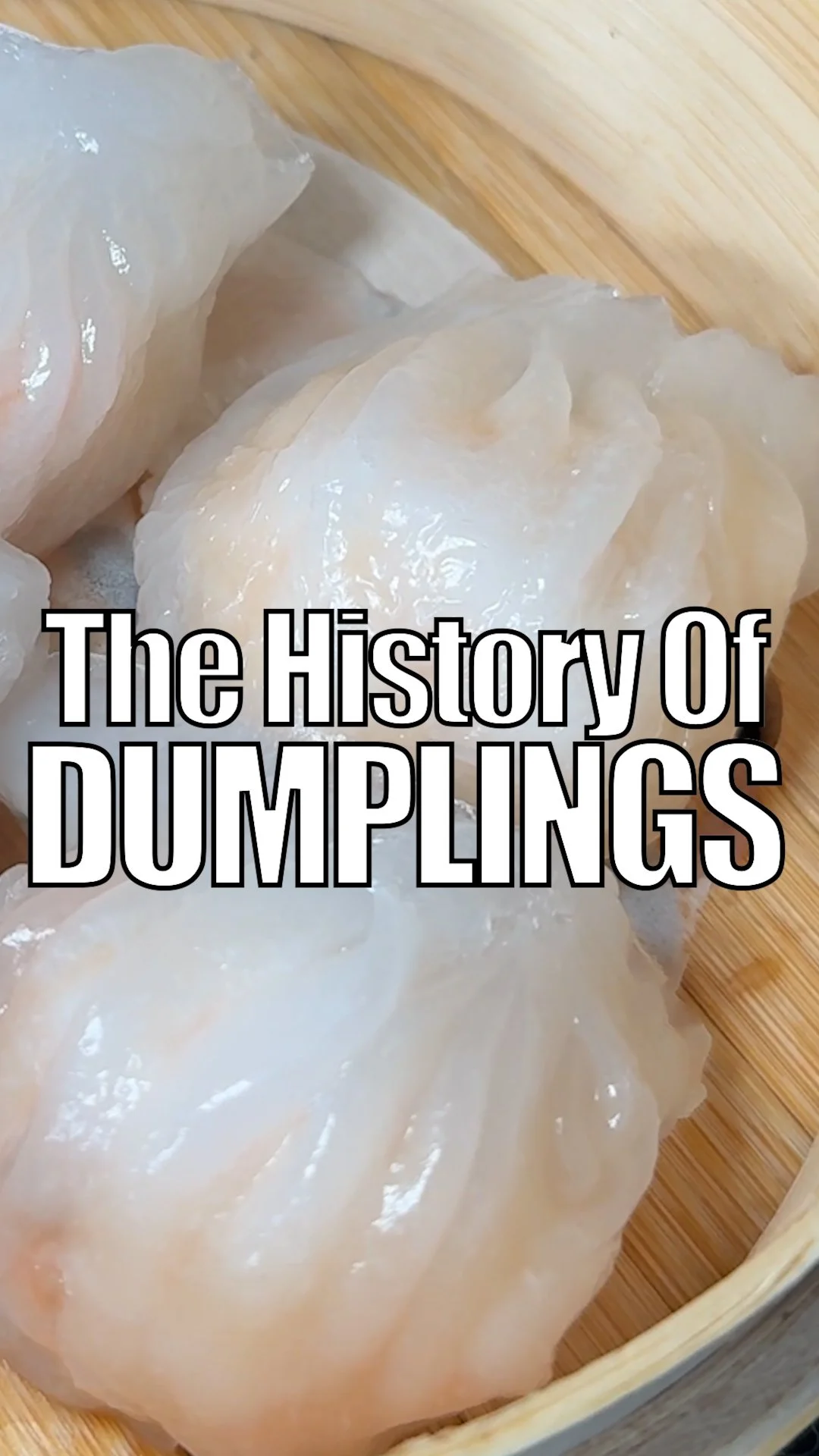Where are dumplings from? The history of dumplings
Do you ever ask yourself, where are dumplings from? and what is the history of dumplings?
Love dumplings? They come in all shapes and sizes. But where are dumplings from? And what is the history of dumplings? I often wondered this, but lucky for you, I found the answer. Read on to learn more!
The dumpling’s origins not only has a delicious history, but a rich and diverse one. From its origins in ancient China to its global popularity today, the dumpling has undergone many transformations and adaptations throughout the centuries.
Visiting new york city? take our chinatown food tour and taste the best dumplings in new york city!
The origins of dumplings
The history of dumplings started in China during the Han Dynasty (206 BC-220 AD). These dumplings, known as jiaozi, were made by wrapping a mixture of ground meat and vegetables in a thin dough and then steaming or boiling them. Jiaozi were considered a symbol of wealth and prosperity and were often served during special occasions such as Chinese New Year.
where were dumplings made?
According to most experts, dumplings were invented in Nieyang, China by Zhang Zhongjing sometime between the years 150 and 219. After a cold winter where people were losing their ears to frostbite, he instructed the people in his town to serve their family members a bowl of broth with two balls of meat encased by scraps of dough shaped like ears. This was believed to increase blood flow to the ears. Today, dumplings are more popular than ever!
How did dumplings spread throughout the world?
As the Silk Road opened up trade between Asia and Europe, dumplings began to spread throughout the continent. In the medieval era, dumplings made their way to Europe where they were known as "dumplings" and were typically filled with meat and served as a hearty, filling dish.
As European explorers traveled to the Americas, they brought dumplings with them and the dish became popular in the colonies. In the United States, Native American cooks adapted the European dumpling by using native ingredients such as corn and sweet potatoes.
How did dumplings arrive in the United States?
In the 19th century, immigrants from Eastern Europe and Asia brought their own versions of dumplings to the United States and Canada, further diversifying the dish. Today, dumplings can be found in a wide variety of cuisines and cultures, from Italian ravioli to Polish pierogi to Japanese gyoza.
One thing that has remained constant throughout the history of the dumpling is its versatility and adaptability. Whether steamed, boiled, fried or baked, dumplings can be filled with almost anything, from meat to vegetables to fruit. They can be sweet or savory, and are perfect for any meal, occasion, or time of day.
And in the lexicon of New York City cuisine, the dumpling is actually the food that brought different cultures together who created NYC’s famous foods. But where are dumplings from? Well, they are from China, but they have been used as a culinary cornerstone by lots of different cultures for thousands of years. As you can see, dumplings origins have grown past China to become a wordwide phenomenon.
Here are some famous types of dumplings you can find in new york city
japanese gyoza
Gyozas became popular in Japan after World War II when Japanese soldiers returned home from China. Similar to American soldiers bringing pizza culture back from Italy, the Japanese enjoyed Chinese dumplings so much they recreated them back in Japan. While Chinese dumplings are often steamed or boiled, Japanese Gyoza are more commonly fried. You can find these at most ramen shops, and our favorite in New York City is at Ippudo.
Chinese Dim Sum - A Cantonese breakfast specialty
Perhaps the most popular type of dumpling meal is Dim Sum. Loosely translating to “Touch the Heart” in Cantonese, this popular breakfast or midday meal is one of the most fun food experiences you can have. When you sit down, you’ll be greeted by a variety of carts selling steamed, fried, and boiled dumplings. The classics are shrimp hargow and shrimp and pork shumai, but we love the shrimp rice rolls. When you order, the servers will stamp your card, and when you pay, they simply count the stamps. It’s a fun way to taste history and our favorite place in New York is Dim Sum Go Go in Manhattan. If you want us to do the ordering for you, check out our World Famous Chinatown Food Tour.
Uzbek samsa
The samsa is perhaps the least known food of this bunch, but it is just as delicious. Baked in a tandor oven, this flakey pastry is stuffed with tender beef, lamb, and other veggie fillings. Started by Persian traders on the Silk Road, Uzbek and other Central Asian traders started to wrap protein in flaky pastry as an easy way to have a meal on the go. Today, this treat is often paired with a tangy tomato sauce, and our favorite place to enjoy this is at Tandor Rokhat on Coney Island Ave.
So next time you enjoy a plate of dumplings, take a moment to appreciate the rich history and cultural significance of this beloved dish. From ancient China to your plate, the dumpling has truly stood the test of time.
If you’re in New York, we’d love to host you on our famous Chinatown food tour! You can find more information here,. We look forward to sharing the best dumplings in New York with you!

